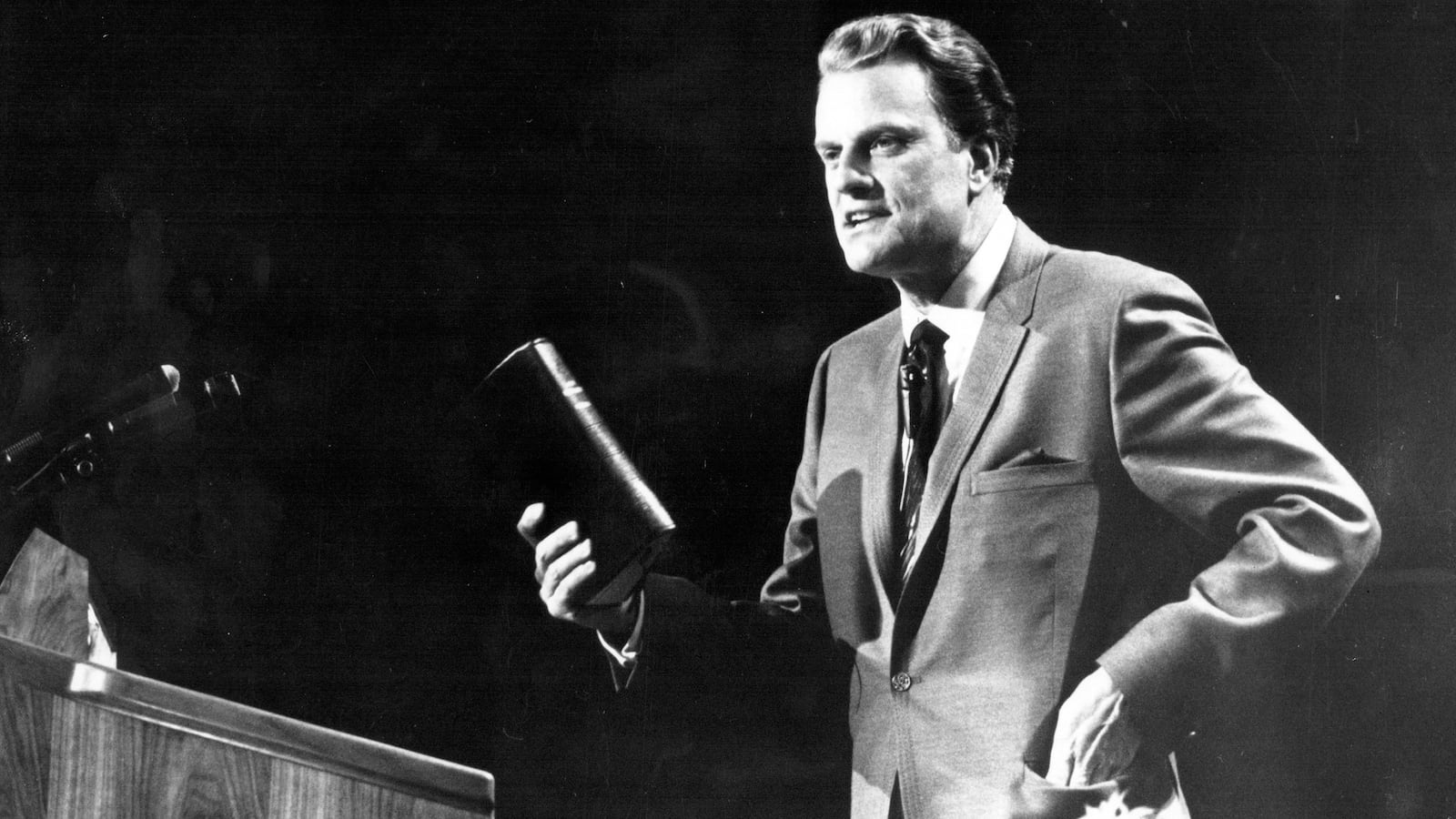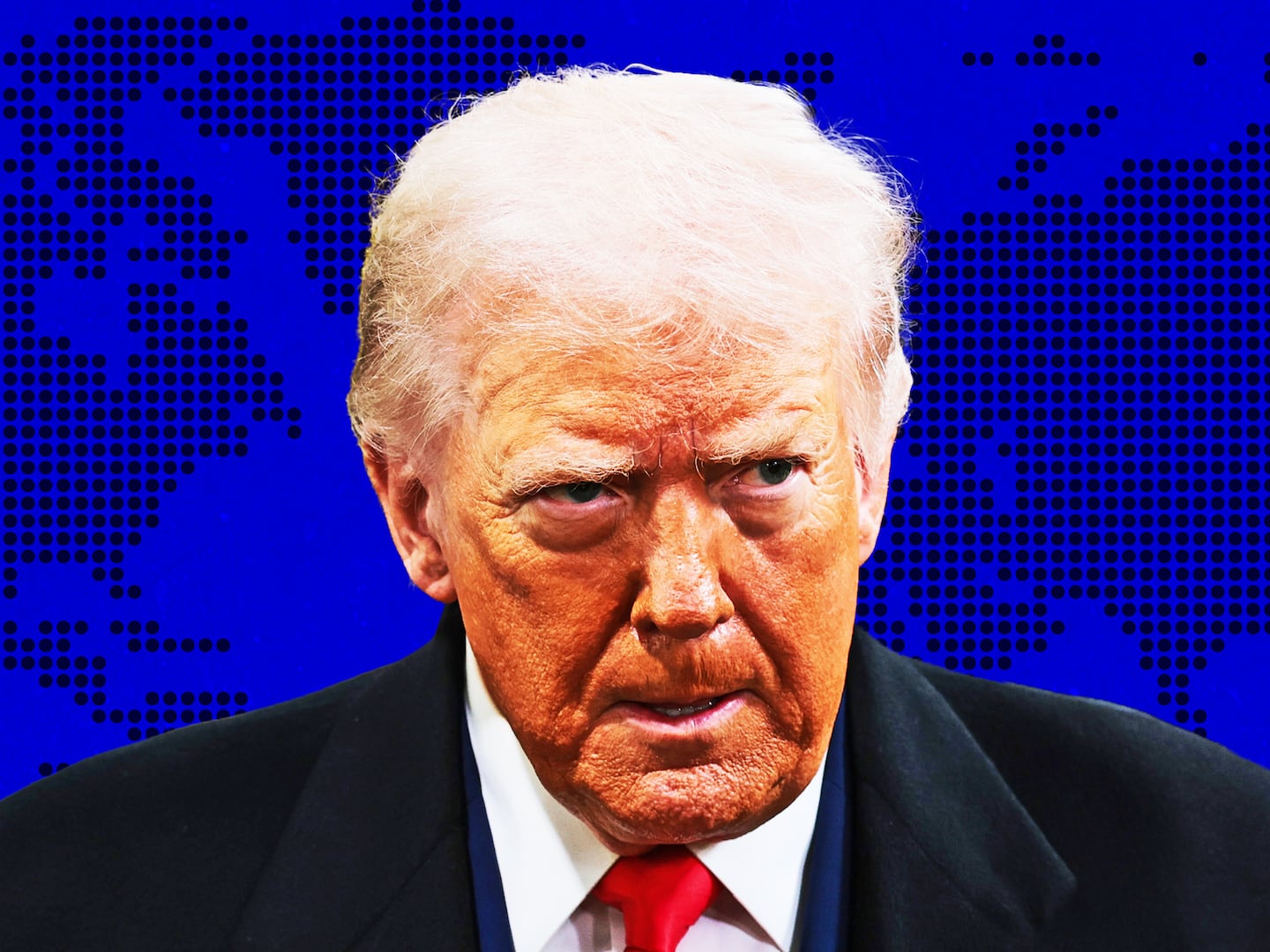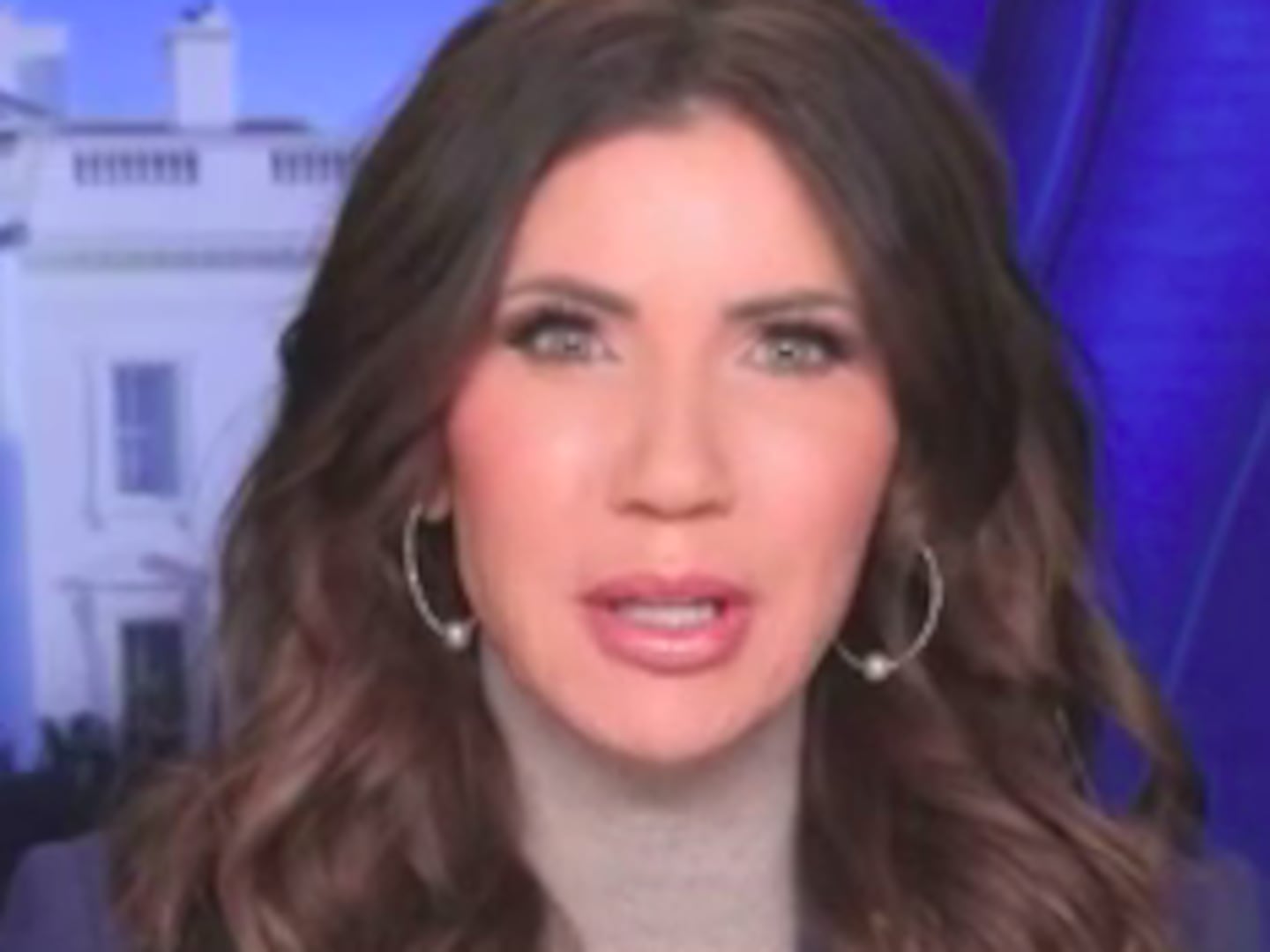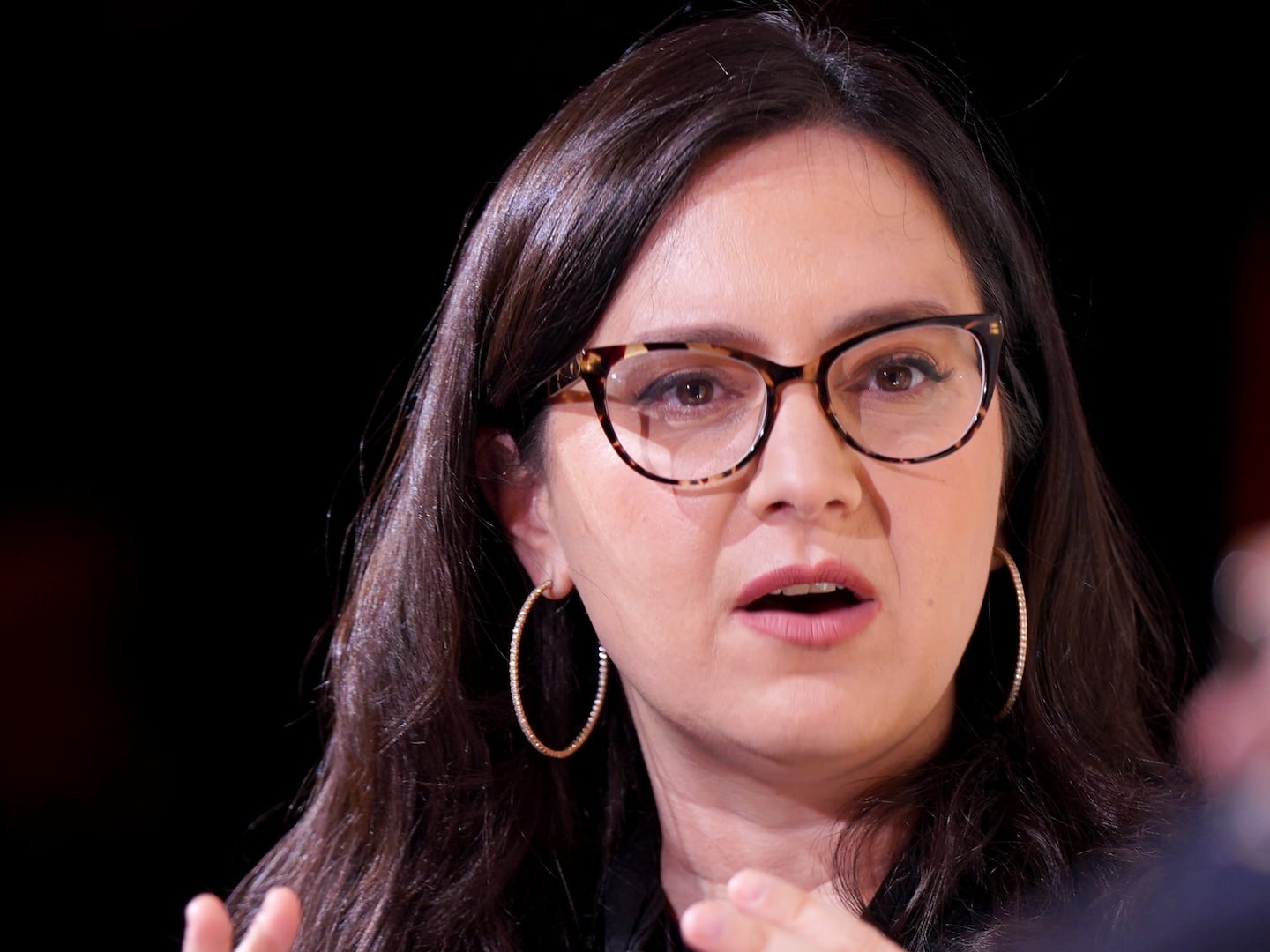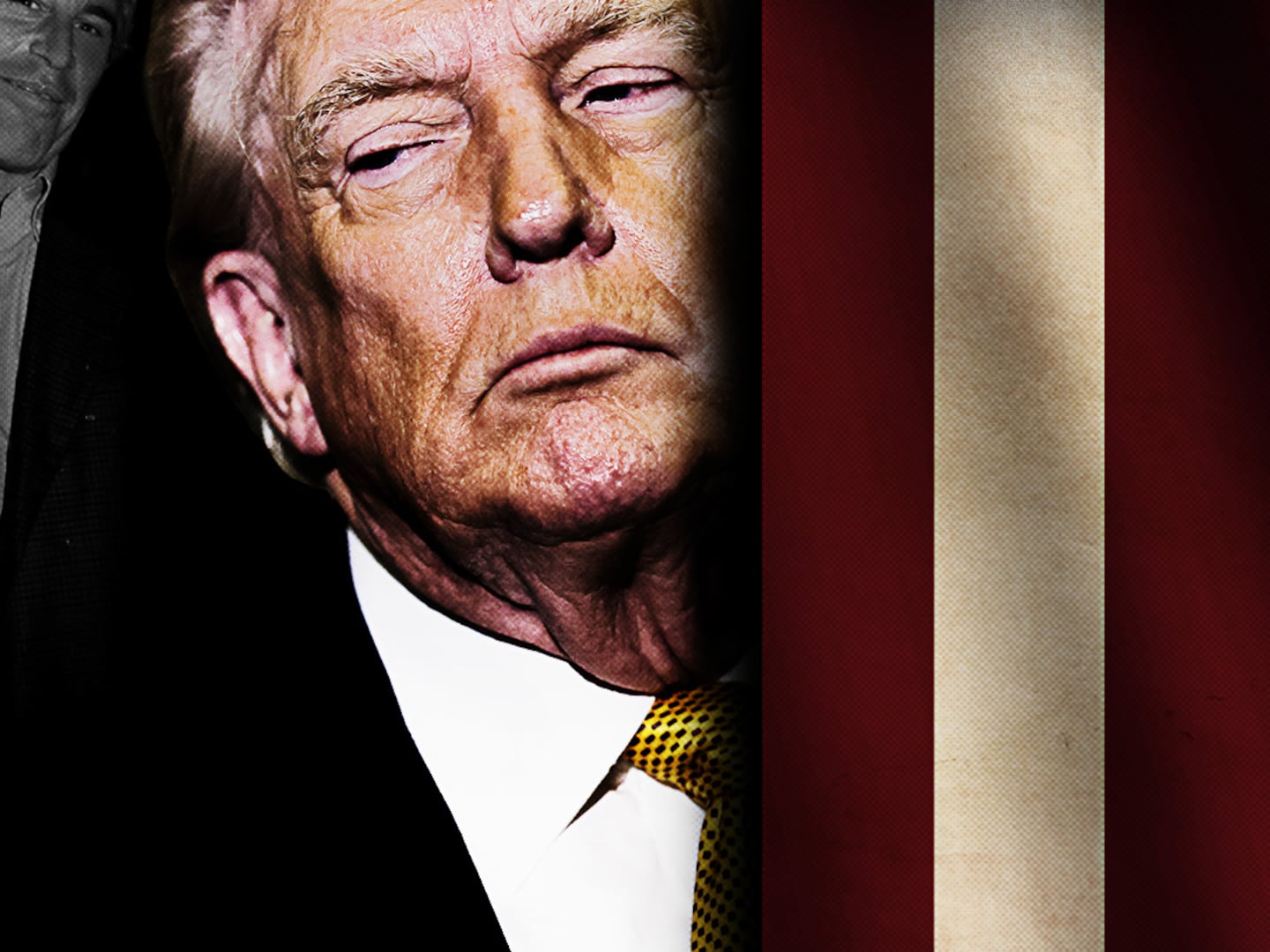No American revivalist before or since achieved the success that Billy Graham did in the middle years of the 20th century.
Indefatigable and constantly in motion, he evangelized on five continents and with the advantages of radio, television, and airplanes spoke to more people than any other preacher before in history. In the United States he was the first truly national revivalist since George White Field. His Viking features appeared on the cover of every national magazine, and from 1955 on he ranked high on Gallup’s list of the most admired men in America. In the ’50s fundamentalists remained a small minority, but in tune with the times and the major politicians of the day, Graham struck a chord that resonated throughout the country. With President Eisenhower he helped forge a connection between religion and patriotism designed to unite Americans against Communism. At the same time he changed the shape of American Protestantism. In the late ’50s it seemed that he had brought both liberals and conservatives together, but the consensus—more apparent than real—shattered in the ’60s over civil rights and the Vietnam War. His lasting achievement was to bring the great variety of conservative white Protestants, North and South, into his capacious revival tent under the name “evangelicals.”
Graham continued to preach revivals until 2005, when age overtook him, but the considerable influence he had wielded had long since gone. By 1980 he had become an icon encrusted in celebrity to whom presidents and foreign heads of state paid ritual homage. In the intervening years his revivals continued to attract enormous crowds, and his craggy profile remained as well known as those on Mount Rushmore. Still, as distinct as his features remained, his views had become so indistinct that he seemed to stand for only the vaguest idea of American righteousness. His politics had changed considerably since the ’50s, but few journalists asked him his opinions, and few historians of religion examined his legacy. In consequence, evangelicals and others have largely forgotten the role he played in propagating fundamentalist thinking and in creating a conservative coalition that included an array of Protestant groups that had never been brought together before. Though the least contentious of men, he contributed to the creation of conservative-liberal divide that went right through American Protestantism.
In the early days of his preaching Graham told the story of the young prophet Amos, the simple shepherd, “the hillbilly,” delivering a message from God to the King of Israel. “And let me tell you something!” he said, wet with exertion. “When God gets ready to shake America, he might not take the Ph.D. and the D.D. and the Th.D. God may choose a country boy! God may choose a man no one knows … a hillbilly, a country boy! who will sound forth in a mighty voice to America, ‘Thus saith the Lord!’” Striding back and forth across the stage, his forefinger slashing the air, he repeated, “Thus saith the Lord! Thus saith the Lord! Thus saith the Lord!”
Graham was a country boy. Born in 1918, he grew up on his father’s 200-acre farm near Charlotte, North Carolina, and as a kid he milked cows, plowed the corn fields, and picked turnip greens. But he was no hillbilly. The farm, well managed by his father, supported the family of six in a red brick house with indoor plumbing. His parents were people of standing in the community and good Presbyterians. The church the Grahams belonged to, the Associate Reformed Presbyterian, was part of a conservative synod established in 1822 that held to a strict interpretation of the Westminster Confession. Every evening the family read the Bible and prayed together; on Sundays they went to church and otherwise read religious tracts and listened to radio programs such as Fuller’s Old Fashioned Revival Hour. According to Marshall Frady, the liveliest of his biographers, Billy, a rambunctious kid, liked these Sunday confinements no better than he liked farm chores or school, but then the families of all the kids he knew practiced the same diligent pieties. Baptists, Methodists, or Presbyterians, the respectable people in town made up a solid phalanx of born-again Bible believers who didn’t smoke or drink, and whose main entertainments were community picnics, church suppers, Bible retreats, and revival meetings.
When Billy was sixteen, Mordecai Ham, an itinerant evangelist and an associate of J. Frank Norris known for theories involving The Protocols of the Elders of Zion, pitched his tent in Charlotte and delivered a series of hellfire-and-brimstone sermons. Billy, along with many others in the town, went to see this new attraction, and one evening, nudged by a friend of the family, he walked down the sawdust trail to the platform and was “born again.” The problem, a friend later told Frady, was that Ham had preached on the “the Devil’s Big Three”—dances, card parties, and booze—and while Billy wanted to give up these things, he couldn’t because he didn’t do any of them. Instead, he became for a while uncharacteristically priggish.
Preachers were prestigious in the Grahams’ community, but in his youth Billy seemed one of the least likely to take a pulpit. An exuberant, gregarious lad, who dressed spiffily, drag-raced his father’s car, and liked kissing girls, he had no vision of his future. He didn’t want to stay on the farm, and while he dreamed of becoming a major league baseball player, he was no athlete. After high school his mother sent him to Bob Jones College because she had heard it was a good Christian school. He lasted just one semester. The grim barracks of the fundamentalist academy, the harsh discipline, and the innumerable picayune rules drove him out by Christmas. Then, because of a friend, he went to the Florida Bible Institute, a small school near Tampa that had taken over a luxurious resort that had failed in the crash of 1929. A member of Riley’s World Christian Fundamentals Association, the school was designed to train evangelists, but initially its principal attractions for Graham were its less stringent rules, its orange groves, and a nearby golf course. Still, when a girlfriend left him for being insufficiently focused, he had a serious spiritual crisis and surrendered himself to Christ one night on the 18th green.
After that, he took to preaching on street corners, in derelict missions, trailer courts, and rural churches with hounds in the sandy yards outside.
“He’d preach to a stump if there was nothing else,” a friend recalled, “anything that’d just stand still for a minute.” Coming under the tutelage of one of his deans, he was rebaptized and ordained as a Southern Baptist. He also worked as caddie on the golf course, and thanks to two piously inclined businessmen, who liked their caddie’s energetic preaching style, he went on to Wheaton College with all expenses paid for a year.
Graham was no scholar, but he graduated from Wheaton and married a classmate, Ruth Bell, who had grown up in China, where her father, Nelson, a conservative Southern Presbyterian, had been a medical missionary. He took over a small Illinois church, but he preferred evangelistic preaching to pastoral work, and when, 18 months later, Torrey Johnson asked him to join Youth for Christ, he accepted with alacrity. As a field representative in charge of organizing local YFC units in 1945, Graham embarked upon an evangelistic marathon, forging through f47 states and most of the provinces of Canada in just three years. He also made six visits to war-torn Europe with Johnson and teams of young pulpiteers. In those years he adopted the flamboyant dress of the swashbuckling YFC preachers and used the events of the day as a lead-in to his message, modeling his delivery on the clipped rhythms of Walter Winchell. From Johnson he learned how to organize large-scale rallies, how to appeal to business and civic groups, and how to attract the press. He also met many of the leading figures in the fundamentalist world.
By 1947 Youth for Christ was so well established across the country that Graham could accept invitations from ministers to conduct revivals of a more general sort. For the next two years he and a small team of musicians and organizers conducted two- and three-week campaigns in cities from Grand Rapids to Miami to Baltimore. His revivals, conducted in tents or rented halls without much advance publicity, were hardly distinguishable from those of a dozen other freelance evangelists traveling the country in those days of religious resurgence. Graham was, as he himself said, still a country boy. Tall and awkward, he had a rough-hewn voice and was given to flailing his arms and stabbing the air with a raised finger. When he told Bible stories, he used slangy vernacular and acted out the parts—preening and strutting in the role of Belshazzar, or prancing around like an uppity pig in the story of the Prodigal Son. Calling for revival, he would stalk the platform, assaulting the audience with vivid descriptions of the horrors that came from man’s rebellion against God. According to his Youth for Christ peers, Graham had a kind of incandescence on the platform that came from his passionate sincerity. Yet even his most fervent preaching did not always meet with success. After a particularly disastrous ten days in Altoona, Pennsylvania, in the summer of 1949, where the local ministers proved uncooperative and a deranged woman could not be pacified, some of Graham’s team members worried that they had come to the end of the road. Still, they picked up and went on to Los Angeles in September.
In Los Angeles local fundamentalists had done some advance work and had pitched what they called the “Canvas Cathedral” on a vacant lot downtown with a banner announcing, “Something’s Happening Inside 6,000 Free Seats Dynamic Preaching Glorious Music.” Just two days before the campaign began, President Harry Truman announced that the Soviet Union had successfully tested an atomic bomb. Graham used the shocking news as the headline for his first Sunday afternoon sermon.
“This nation now knows that Russia has the atomic bomb! Today Moscow announced that Russia has been piling up bombs for over two years … Do you know the area that is marked out for the enemy’s first atomic bomb? New York! Secondly, Chicago! And thirdly, the city of Los Angeles! Do you know the Fifth Columnists, called Communists, are more rampant in Los Angeles than any other city in America? God is giving us a desperate choice, a choice of either revival or judgment. There is no alternative! . . . Judgment is coming just as sure as I am standing here!”
From there Graham went on to speak of a world divided into two irreconcilable camps: on one hand Bible-based Western culture and on the other Communism, “a religion that is inspired, directed and motivated by the Devil himself who has declared war against Almighty God.” On other evenings Graham declaimed on the paganism and immorality of modern America—the growth of crime, divorce, and juvenile delinquency—and the need to return to the old-time religion. In closing he would pounce to the edge of the stage and confront the audience directly. “If we’re not guilty of one thing, we’re guilty of another . . . ‘Thou shalt not murder’—so you say you haven’t. Well, there are hundreds of husbands in this city who are killing their wives by neglect. There are boys and girls out there who are killing their mother and father with the wild life you are leading. You are guilty of murder!” Then the music would swell up behind him, and he would call for those who wanted to be sure of their salvation to make a decision for Christ.
The crusade went on with moderate success, and the three-week engagement was extended to four. Then two things happened: Stuart Hamblen, a former rodeo star with a popular radio show, declared he had been saved by Graham, and William Randolph Hearst sent a telegram to his newspaper editors saying, “Puff Graham.” A swarm of reporters and photographers appeared in the tent, and Graham’s revival became front-page news. His audiences burgeoned; Hollywood stars showed up; the wires and the news magazines ran stories; and by the end of another four weeks of preaching Graham had become a national celebrity.
Swept along in a gale of publicity, Graham arrived in Boston six weeks later to preach in Harold Ockenga’s Park Street Church. The National Association of Evangelicals magazine had given Graham favorable coverage in his Youth for Christ days, but Ockenga had had his doubts about this slangy young evangelist who had never seen the inside of a theological school. Still, Ockenga longed for a revival, and the more conventional evangelists he had invited had failed to raise the temperature. Graham, however, packed the Park Street Church, Mechanics Hall, the Opera, and finally Boston Garden—leaving thousands of people on the streets outside. At the invitation of numerous ministers, he returned in the spring and preached in all the major New England cities, ending his tour with a rally on the Boston Common, where George White Field had preached in 1740. Ockenga was beside himself with enthusiasm. At the annual NAE convention in April he told the crowd, “You do not have to wait till next year. You don’t have to wait ten years. You don’t have to pray any more, ‘Lord, send a revival.’ The revival is here!”
By background and education Billy Graham was well positioned to preach the national revival of conservative Protestantism that Ockenga and his fellow NAE leaders dreamed about. He was a fundamentalist; his views on such matters as biblical infallibility, the virgin birth, and the Second Coming were perfectly orthodox. On the other hand, he had been brought up in a world innocent of modernism and far from the din of the fundamentalist battle with apostasy. As a result, he had none of the scars that most fundamentalists bore from the defeat. He had no sense of alienation, no martyrdom complex, no need to look for enemies, and none of the resentment that fundamentalists, even those as sophisticated as Ockenga, felt about their second-class status in the Protestant world. As a revivalist, he knew that people didn’t want to hear about doctrinal disputes, and having been a Presbyterian and a Southern Baptist, he had little interest in denominational differences. He stood, as he told the NAE convention in 1952, for “a spiritual ecumenical movement” of all “born-again believers.” At the time he was often compared to Dwight Moody. But Moody’s audiences were entirely northern, and Graham, who came from a border state—in a different period—could speak to southerners and northerners alike. Where he resembled Moody was in his confidence that he spoke for the essential American religion.
After the New England revival, Graham continued his triumphal procession across the country—Fort Worth, Shreveport, Memphis, Seattle— his city-wide campaigns, or crusades, as he called them, lasting for four or five weeks at a time and drawing audiences of 300,000 to 500,000 people. Along the way he built a highly efficient organization, the Billy Graham Evangelistic Association, which elaborated upon the techniques of mass evangelism developed by Moody and Billy Sunday. The prodigious advance work included the mobilization of churches, the formation of a local committee to raise money, extensive advertising in the local media, and the training of thousands of volunteers. Businessmen’s luncheons, prayer groups, and work committees would be set up weeks before the crusade, and often Graham himself would come to speak to civic groups or the state legislature. To assure a reasonable turnout, organizers would obtain commitments from local churches to fill half the seats at the nightly services. During the crusade, interest would be heightened by spectacular open-air rallies and the appearance of politicians and Christian celebrities—sometimes Graham’s friends Dale Evans and Roy Rogers with his horse, Trigger. When the campaign was over, the organizers would announce how many people had attended and how many “inquirers” had come forward and signed decision cards for referral to local churches. They would also present an audited account of the financial intake and expenses so there could be no doubt about the fiscal rectitude of the Billy Graham Evangelistic Association or any of its local partners.
By 1954 Graham had held crusades in 25 major American cities and had spoken directly to some eight million souls. His column, “My Answer,” appeared in 73 newspapers, and his weekly radio program, Hour of Decision, had an audience of 15 million in the United States and abroad. He had changed somewhat in the course of four years. The advertisements for his crusades no longer read “Dazzling Array of Gospel Talent” or “Sixth Great Sin-Smacking Week.” He had given up his colorful clothes for conservative ties and subtly textured gray or brown suits tailored in London. He spoke deliberately, and his voice had acquired a deep bronze resonance, as some imagined the voice of God. He had stopped telling jokes about kicking mules and saying that people saw Noah before the Flood as “a crazy old fellow” with “a screw loose somewhere.” He quoted eminent thinkers, and his readings of the Bible were less literalist than they had been just two years before when he had specified the dimensions of heaven and hell in cubic miles. In later sermons he said it didn’t matter whether heaven literally had streets of gold or hell had lakes of fire, for heaven “represents reconciliation and fellowship with God and Christ,” and “Hell essentially and basically is a banishment from the presence of God.”
By then Graham was moving in exalted circles. As he said during his 1952 crusade in Washington, D.C., “I’m appealing to a higher-type social strata.” He had gained the backing of some of the most powerful businessmen in the country, among them Henry Luce, the investor Russell Maguire, and the oil baron Sid Richardson. Politicians of both parties flocked about him. He gave his first devotional in Congress in April 1950 and caught the eye of House speaker Sam Rayburn, who declared, “This country needs a revival, and I believe Billy Graham is bringing it to us.” After that he was often invited to prayer meetings, ceremonies, and luncheons hosted by senators as ill-assorted as Lyndon Johnson and Everett Dirksen. During his Washington crusade, he gave a sermon on the steps of the Capitol and addressed one hundred legislators on the subject of “Christ and Communism.” That year he met Eisenhower and spent a few days with him on the campaign trail. After the election he often visited the president in the White House, and once at his Gettysburg farm, and the two corresponded with some regularity. He also had frequent meetings with Vice President Richard Nixon and the pious Presbyterian secretary of state, John Foster Dulles.
In 1952 he went to see President Truman, but made the gaffe of repeating his conversation with the president to reporters and re-creating the pose they had struck in prayer. Truman refused to see him again.
Graham liked the company of powerful men, and throughout his career many politicians courted him because of the large constituency he represented, or in the hope that his blindingly righteous presence might envelop them. Eisenhower, however, didn’t need Graham for electoral purposes, or as a scandal deflector. He appreciated what Graham was doing for the country, though he wasn’t a fundamentalist, and Graham wasn’t an Eisenhower Republican. The affinity between the two of them owed to the particular connection that they and many other Americans made between religion and the security of the country in the ’50s.
In his Youth for Christ days Graham had learned that speaking of current events attracted attention, and while in his revivals he confined himself to generalities, he often spoke on his weekly radio program about specific issues in world affairs. One of the primary purposes of Hour of Decision, he told his listeners, “is to keep you abreast of fast-moving world events and try to interpret them for you in the light of Scripture.” As a Christian news analyst, he paid particular attention to developments in East Asia—long the primary mission field for American Protestants. After the Communist victory in China and the outbreak of the Korean War in 1950, he charged that Roosevelt and Truman had betrayed Chiang Kai-shek and Syngman Rhee by playing into the hands of the Russians at Tehran, Yalta, and Potsdam. In 1952 he told an audience that the Korean War was being fought because “Alger Hiss shaped our foreign policy and some of the men who formulate it [now] have never been to the East.” He complained that Truman had gone to war without consulting the American people, and later that Truman had been “cowardly” in refusing to follow General Douglas MacArthur’s advice to pursue the war to victory, even if it meant bombing military bases in Communist China. When the Eisenhower administration ended the war by negotiation in 1953, he told his radio listeners, “This is the first war in American history we have not won . . . we have shown our moral weakness. We have shown that when pressed we could betray our friends and compromise with the enemy.” There can, he preached, “be no parleying or compromise with evil.” He admired Syngman Rhee’s intransigence, but his real hero was Chiang Kai-shek, and as late as 1956 he was calling for Chiang to invade the Chinese mainland and claiming that he had been told if Chiang could stay one month, “whole armies would desert to his cause and there would be a general uprising.”
Europe seemed to concern Graham less. In the fall of 1951 he predicted “an economic downfall” for America if the “give-away” program of foreign aid to Western Europe continued. In a sermon he maintained that “one CARE package did more good than all the Marshall Plan aid.” However, he occasionally urged the United States to encourage armed revolts in Eastern Europe, and after the Soviets crushed the Hungarian rebellion in 1956, he condemned Western leaders for not daring to stand up to the Russians.
Graham never spoke ill of Eisenhower, but his foreign policy prescriptions were those of the president’s Republican opponents: Robert Taft and the other midwesterners who denounced containment and called for “unleashing Chiang” and to “roll back” in Europe—policies that Eisenhower believed might lead to World War III. Then, like many right-wing Republicans, Graham raised fears that “Communists and left-wingers” were infiltrating America’s schools, colleges, churches, and national security agencies. In 1953, at the height of the investigations into subversion in government by the Jenner, Velde, and McCarthy committees, he said in a radio sermon: “While nobody likes a watchdog, and for that reason many investigation committees are unpopular, I thank God for men who, in the face of public denouncement and ridicule, go loyally on in their work of exposing the pinks, the lavenders, and the reds who have sought refuge beneath the wings of the American eagle.” When Joseph McCarthy was censured by the Senate, Graham complained that the Senate was fiddling “over trifles” and was “bringing disgrace to the dignity of American statesmanship.”
In his revivals Graham rarely failed to bring up the threat of Communism, atomic weapons, and World War III. Indeed, these secular dangers often seemed to substitute for the fear of hell, or the coming of Armageddon, that previous revivalists had used as a spur to conversion. However, he often described men and nations as the instruments of higher powers. “My own theory about Communism,” he said in September 1957, “is that it is masterminded by Satan … I think there is no other explanation for the tremendous gains of Communism in which they seem to outwit us at every turn, unless they have supernatural power and wisdom and intelligence given to them.” Compromise with the Communists was therefore impossible. “Either Communism must die or Christianity must die,” he said, “because it’s actually a battle between Christ and anti-Christ.” Like most dispensationalists, Graham maintained that the Antichrist had arisen in Russia, and each new Middle Eastern crisis, from the rise of Gamal Abdel Nasser in Egypt to the nationalization of Iranian oil, to the deployment of American troops to Lebanon in 1958, provided him with an occasion to predict that Armageddon would take place when “the armies of the north” moved on the Middle East.
Dispensationalists believed human history was on the road to destruction, and Armageddon could not be averted. Like them, Graham sometimes proposed that all that humans could do was to convert, evangelize, and await the Second Coming. “We may have another year, maybe two years, to work for Jesus Christ, and [then] . . . it’s all going to be over,” he said in 1951. Two years later he said, “I sincerely believe, if I can study the Scriptures aright and read current events and keep with my current reading, that we are living in the latter days. I sincerely believe that the coming of the Lord draweth nigh.” Still, having figured Armageddon as a battle between Christian America and Communist Russia, he often held out hope for the future of the country. Once, when asked how the conversion of all Americans would stop the Soviets, he said, “I sincerely believe that if Americans turned to God at this moment, we would have divine intervention on our side.” On another occasion he said more specifically that if the nation would repent of its sins, “God himself would intervene and frustrate and blind the Russians as he did the armies of old.” At other times he struck a more Arminian note: “Only as millions of Americans turn to Jesus Christ in this hour and accept him as Savior, can this nation possibly be spared the onslaught of demon-possessed communism.” “You say, ‘But Billy, I am only one person.’ Ah yes, but when you make your decision, it is America through you making its decision.” In other words, Graham sometimes invoked Communism as a part of an end times prophecy and at other times as a part of a jeremiad in which Americans had a choice to make.
Eisenhower, the pragmatic statesman, would not, it might be imagined, have found Graham’s apocalyptic scenarios any more congenial than his policy prescriptions. At the beginning of the Cold War, however, he and other members of the internationalist foreign policy establishment took to using similarly apocalyptic rhetoric to promote another kind of American revival.
Throughout the ’50s, national security officials—and the foreign policy establishment generally—constantly worried that the American people, used to thinking the country invulnerable between two oceans, might not choose to make the economic sacrifices needed to sustain the Cold War effort. Eisenhower, who believed that no victory was possible and that the containment of Communism would have to continue indefinitely, became the chief worrier. In the first few months of 1953 he and his advisors developed a campaign, known as Operation Candor, to teach Americans about the threats they faced in “an age of peril”—an operation that Eisenhower’s chief of staff , Sherman Adams, described as “a fiber-toughening exercise.” As a part of the campaign, Eisenhower from time to time talked frankly about the power of nuclear weapons: the effects of radioactive fallout, the possibility that the H-bomb might even blow “a hole through the entire atmosphere” and destroy all civilization. He argued that the vastly increased defense expenditures had been forced on the United States because the Communists had rejected every offer of peace. Eisenhower himself described the Soviet military threat without hyperbole, but under his administration national security agencies and blue-ribbon commissions often issued studies much like NSC-68, whose conclusions, selectively leaked, indicated that the Soviets were developing the capability to disarm and defeat the United States. Indeed, in national security circles apocalyptic scenarios became a more or less ordinary means of communicating a sense of urgency about military preparedness.
Eisenhower’s worries about the American people, however, went deeper than whether or not they would pay for his military budgets. In a wartime letter to his wife he wrote:
“Just as the [First] World War brought in an era of almost hysterical change and restlessness, so will this one bring about revolutions in our customs, laws and economic processes. If we could hope for a greater mass discipline—self-imposed—there would be cause for rejoicing; the danger is that special economic, industrial or social groups will apply pressures that will either be disruptive or might force, for a time at least, the adoption of some form of dictatorship in our democracies. Either outcome would be tragic .... It looks as if we must face a long struggle.”
A few months after taking office he wrote in his diary: “The principal contradiction of the whole [American] system comes about because of the inability of men to forgo immediate gain for a long term goal.”
In his speeches Eisenhower used religious rhetoric more than most other presidents and repeatedly called for a spiritual revival. He instituted national prayer breakfasts, and during his presidency the Congress added the words “under God” to the Pledge of Allegiance and had “In God We Trust” engraved on the currency and adopted as the national motto over “E Pluribus Unum.” In 1954 he and his Presbyterian pastor created the Foundation for Religious Action in the Social and Civil Order to “unite all believers in God in the struggle between the free world and atheistic Communism.” The Foundation, whose board members included Billy Graham and Norman Vincent Peale Jr., held conferences in which Protestant, Catholic, and Jewish clergymen, along with pious national security officials such as Leo Strauss, chairman of the Atomic Energy Commission, gave speeches on the spiritual factors in the anti-Communist struggle. At the first of these conferences Eisenhower proclaimed that the Foundation would show how to “take the Bible in one hand and the Flag in the other, and march ahead.” In 1955 the Republican National Committee resolved that President Eisenhower “in every sense of the word is not only the political leader but the spiritual leader of our times.”
Eisenhower, who had no denominational affiliation until after his election, when he joined the Presbyterian Church, espoused no particular religion for democracies. “Our form of government has no sense unless it is founded in a deeply religious faith, and I don’t care what it is,” he famously said shortly before taking office. He added, “With us of course it is the [Judeo]-Christian concept, but it must be a religion that all men are created equal.” In his view all religions taught the same essential truth: the need to restrain selfishness for the greater good. Whatever he himself believed about the Almighty, he invariably described religion as a public utility: “a national resource,” an “advantage,” a “strength,” a “weapon.” “Spiritual strength,” he said, is “the real source of America’s power and greatness.” Religion and patriotism thus became inextricably linked. In 1955 he told the American Legion, “Recognition of the Supreme Being is the first and most basic expression of Americanism. Without God, there could be no American form of government nor an American way of life.” It followed that the Almighty approved of Americanism, as Eisenhower defined it, and of the struggle his administration was waging for the future of civilization.
Eisenhower and Graham did not agree on theology or foreign policy, but they agreed on the place of religion in what both considered perilous times. They agreed that America was fighting atheistic Communism and that national survival rested on the belief of Americans in God. “A spiritual awakening,” Graham said, “will restore our spiritual heritage, create moral stamina and consciousness, bring back the sanctity of the home . . . strengthen the bulwarks of freedom and bring integrity back to the people of the world.” They agreed that patriotism and religious belief were synonymous and that America had a moral and spiritual mission to redeem the world. “If you would be a loyal American, then become a loyal Christian,” Graham said in one sermon, and in another, “We are created for a spiritual mission among the nations.” Graham, of course, did not believe that just any religion would do. In a sermon titled “Satan’s Religion” he offered five ways Americans could “most effectively combat Communism.” The first was “by old-fashioned Americanism”; the second “by conservative and Evangelical Christianity”; the third by prayer; the fourth by spiritual revival; and the fifth “by personal Christian experience.” “The greatest and most effective weapon against Communism today is to be a born-again Christian,” he said.
Despite his sectarian perspective, Graham’s position was closer to Eisenhower’s than to that of liberal Protestant leaders, all of whom objected to the conflation of Christianity with Americanism, and some of whom had a disconcerting tendency to call for nuclear disarmament and talks with the Communist Chinese. It was also closer to the majority position of the day. In 1949 Graham had styled himself as Amos, the prophet crying in the wilderness, but in four years he had become a pastor of the national civil religion.
From The Evangelicals by Frances Fitzgerald. Copyright 2017 by Frances Fitzgerald. Reprinted by permission of Simon & Schuster, Inc.
Frances FitzGerald is the recipient of the Pulitzer Prize, the National Book Award, the Bancroft Prize, and a prize from the National Academy of Arts and Sciences. She is the author of The Evangelicals: The Struggle to Shape America; Fire in the Lake: the Vietnamese and the Americans in Vietnam; America Revised: History School Books in the Twentieth Century; Cities on a Hill: A Journey through Contemporary American Cultures; Way Out in the Blue: Reagan, Star Wars and the End of the Cold War; and Vietnam: Spirits of the Earth. She has written for The New Yorker, The Atlantic, Harper’s, The New York Review of Books, The Nation, Rolling Stone, and Esquire.

